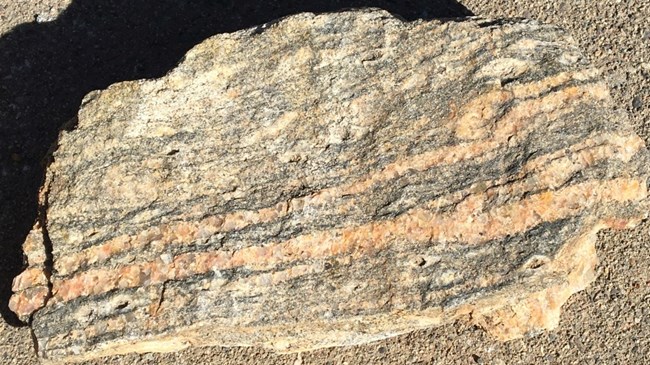
NPS/A. Fitzgerald GneissThe road at Cimarron (Curecanti National Recreation Area) leads to the Morrow Point Dam Overlook; there one can find some fine examples of gneiss, the predominant rock in the Black Canyon. Gneiss (pronounced "nice") has bands, layers, or even lenses of blocky crystals such as feldspar, alternated with bands of a flat, plate-like mineral such as mica. Gneiss represents some of the most advanced stages of metamorphism—where the most intense temperatures and pressures are exerted upon the rock. Original rocks were buried even deeper and were hotter, almost to the point of melting. Places where the rock has been partially melted and the melt was injected, or squeezed into the layers of the remaining solid portions of the gneiss, create a type of gneiss known as migmatite. Migmatite gneiss is a rock that almost melted and is an intermediate between igneous and metamorphic. The gneiss has been so highly transformed, meaning that the temperatures and pressures were so extreme, that there is little evidence of what the original sedimentary layers of rock were. The large amount of mica, with a silica content of nearly 85 percent, suggests that the original rock (protolith) was an impure sandstone or chert. Rare minerals such as garnets, staurolite, or sillimanite can be abundant locally. The presence of these minerals acts as a marker for exactly how much pressure and temperature the original rocks were exposed to during metamorphism. |
Last updated: April 24, 2025
